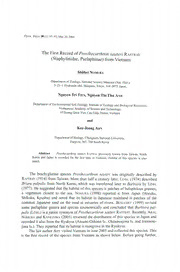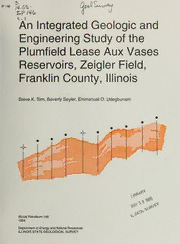
An integrated geologic and engineering study of the Plumfield lease Aux Vases Reservoirs, Ziegler Field, Franklin County, Illinois / Steve K. Sim, Beverly Seyler, Emmanuel O. Udegbunam PDF
Preview An integrated geologic and engineering study of the Plumfield lease Aux Vases Reservoirs, Ziegler Field, Franklin County, Illinois / Steve K. Sim, Beverly Seyler, Emmanuel O. Udegbunam
QaJl^u^^i IP 146 M.Q%: An Integrated Geologic and Engineering Study the of Lease Aux Vases Plumfield Reservoirs, Zeigler Field, Franklin County, Illinois Steve K. Sim, Beverly Seyler, Emmanuel O. Udegbunam A + # H Illinois Petroleum 146 1994 Department of Energy and Natural Resources ILLINOIS STATE GEOLOGICAL SURVEY IJMHISTATE^GEOLOGICALSURVEY 3 3051 00004 8797 An Integrated Geologic and Engineering Study of the Lease Aux Vases Plumfield Reservoirs, Zeigler Field, Franklin County, Illinois Steve K. Sim, Beverly Seyler, Emmanuel O. Udegbunam Illinois Petroleum 146 1994 ILLINOIS STATE GEOLOGICAL SURVEY Morris W. Leighton, Chief Natural Resources Building 615 E. Peabody Drive Champaign, Illinois 61820-6964 DISCLAIMER This reportwaspreparedbythe IllinoisStateGeologicalSurvey(ISGS)fora project sponsored by the State of Illinois and the U.S. Department of Energy (USDOE). It presents reasonable interpretations ofavailable scientific data. Any opinions, find- ings, conclusions, or recommendations expressed herein are those of the authors and do not necessarily reflect the views of the USDOE. Neither the ISGS, any memberofthe ISGS staff, the Illinois DepartmentofEnergyand Natural Resources (ENR), nor the USDOE assumes any liability with respect to the use, or for any damages resulting from the use, ofany information contained in this report. Use of trademarks and brand names in this reportdoes notconstitute endorsementofany product bythe ISGS, ENR, or USDOE. — Editor E. Anne Latimer — Graphic Artist Sandra Stecyk PrintedbytheauthorityoftheStateofIllinois/1994/1200 printedwithsoybeaninkonrecycledpaper 7 CONTENTS ABSTRACT 1 INTRODUCTION 2 FIELD HISTORY 3 Production History 3 Pressure Maintenance History 3 Historical Recovery Performance 4 RESERVOIR CHARACTERIZATION 4 Geological Description of Reservoirs at Zeigler Field 4 Depositional processes 5 Bottom-hole pressure surveys 6 Trapping mechanism 7 Diagenesis 7 Reservoir Properties 8 Drill stem test data 8 Original reservoir pressure from drill stem tests 12 Effective in situ permeability and permeability-thickness product 12 Estimated damage ratio 13 Determination of productivity index 13 Trends of Reservoir Data in the Plumfield Lease 15 Hydrocarbon PVT properties 16 Initial water saturations 1 Oil-water contact 17 Estimation of Reserves 20 Geological Modeling 20 RESERVOIR SIMULATION 22 Gridblock Selection and Simulation Technique 22 Initialization ofthe Reservoir Simulation Model 22 History Match 23 Waterflood History in the Plumfield Lease 23 Oil Recovery Factor and Unrecovered Mobile Oil in the Plumfield Lease 26 FUTURE DEVELOPMENT OPPORTUNITIES IN THE PLUMFIELD LEASE 26 SUMMARY AND CONCLUSIONS 27 ACKNOWLEDGMENTS 28 REFERENCES 28 1 681 FIGURES 1 Location ofZeigler Field, Franklin County, Illinois 2 2 Generalized stratigraphic column for southern Illinois 2 3 Well location map of Plumfield and Mack leases, Zeigler Field 4 4 Oil production history of Plumfield lease 5 5 Conceptual geologic model depicts conditions leading to encasement of reservoirsandbars 5 6 Contour map of net pay in the Plumfield and Mack leases 6 7 Cross section (A-A') of South Plumfield lease shows the convex geometry ofthe sandstone bar 7 8 Cross section (B-B') ofthe northern part ofthe West Plumfield and Plumfield leases 8 9 Distribution of bottom-hole pressure in the Plumfield lease in January 1966 10 10 Distribution of bottom-hole pressure in the Plumfield lease in January 1967 10 1 Structure map oftop ofthe Ste. Genevieve Limestone Formation 1 12 Hornerplot foranalysis of drill stem test data from the Plumfield no. 1 well 13 13 Contour map of permeability-thickness (kh) in the Plumfield lease 14 14 Contour map of heterogeneity index in the Plumfield lease 14 15 Cumulative distribution function of permeability in the Plumfield no. 2 well 15 16 Variation of solution gas-oil ratio with saturation pressure as determined by experimental PVT measurements ofgas-crude oil mixtures from the Aux Vases Formation, Zeigler Field 18 17 Variation of oil formation volume factorwith saturation pressure as determined by experimental PVT measurements of gas-crude oil mixtures from the Aux Vases Formation, Zeigler Field 1 18 Comparison of core-derived watersaturation values with calculated values 19 19 Relationship between capillary pressure and watersaturation in the Plumfield lease as determined by Leverett (J) function forvarious permeability values 19 20 Comparison of core-derived permeability values with those determined SGM™ by 21 21 Permeability distribution of the cross section (C-C') of West Plumfield and Plumfield leases 22 22 Comparison of simulated values for oil production rates and watercuts forthe South Plumfield no. 2 well with actual values through time 24 23 Comparison between observed and calculated field pressure atthe Plumfield no. 2 well 24 24 Relationship between permeability-thickness (kh) and cumulative oil production of Plumfield lease 25 25 Comparison of historical and alternative (predicted) waterflood oil recovery performance 25 TABLES 1 Nomenclature used in the report 3 2 Drill stem test ofthe Plumfield no. 1 well 12 3 Average permeability and porosity of some producing formations in the United States 1 4 Original oil in place (OOIP) as a function of oil-water (OWC) elevation and rock permeability 20 ABSTRACT The number of well abandonments in Illinois since 1987 has increased threefold. One reason for the increase is difficulties encountered in waterflooding small heterogeneous reservoirs. This study describes the development strategies used in a successful waterflood project in the Plumfield lease atZeigler Field in Franklin County, Illinois. These strategies could be applicable to similar reservoirs. The Plumfield lease produced approximately2 million barrels ofoil during the past 29 years. The reservoir zone is in the Mississippian Aux Vases Formation and comprises three slightly overlapping and narrowly connected offshore marine sandstone bars. Reservoir management strategies used at the Plumfield lease included obtaining cores from almost every well, bottom-hole pressure surveys, and production and injection surveillances. Bottom-hole pressure surveys and production and injection surveillances were used to locate permeability barriers, essential knowledge for optimum placement of water injectors in the field. The extensive core analyses showedwhetherreservoirintervalsexisted, andthe reservoirporosity, permeability, and residual fluid saturations. Data from the core analyses were very important in defining flow units within the reservoirs in the Plumfield lease. The waterflood performance of the Plumfield lease at Zeigler Field was evaluated using an integrated three-dimensional geologic and reservoir simulation model. A two-layer model was used to characterize the distribution of porosity, permeability, and fluid saturations in the reservoirs. Estimates from reservoir analyses showed MMSTB thatthe Plumfieldleasecontained4.56 (millionstocktankbarrels),ofwhich 43.07% was produced between June 1963 and February 1992. Simulation of anotherreservoirmanagementscenario inwhichwaterinjectorswere placed atthe onsetofoilproductionshowedarecoveryof 1.05% moreoilthanthehistoricalcase. The predicted ultimate oil recovery factorwithoutwaterflood was 23%. Reserve calculations indicatethatabout57%ofthe original oil in place (OOIP) was bypassed atthe Plumfield lease and that 14% ofthe remaining OOIP is moveable. The results of the reservoir simulation indicate the bulk of the recovered oil was produced from the upper, more permeable sand. Future development opportunities at Plumfield should include improvement of sweep efficiency with polymers or cross-linked polymers and use of microbial enhanced oil recoverytechniques. Targeted infill drilling, as part ofan improved oil recovery project, should also be considered if economically feasible. Field-wide tracertests or othertests to define flow units are strongly recommended to identify various scales of heterogeneities not detected by previous reservoir management programs in the field. The information gathered will provide a better understanding of the reservoir architecture and show the best ways to recover the remaining oil through improved recoverytechniques. Oil recovery during waterflood in this lease is relatively high for the Aux Vases Formation and attributable to the good reservoir management practices by the operator. INTRODUCTION Zeigler Field is in the southern half of Franklin County, in the south-central part of the Illinois Basin (fig. 1). Although Zeigler Field consists of several leases, onlythe Plumfieldleaseisconsideredinthisstudy. Sinceitsdiscoveryin 1963,thePlumfield lease hasproducedcloseto2millionbarrelsofoilfromthe MississippianAuxVases Formation sandstone reservoirintervals (fig.2).The reservoircovers500acresand contains 30 productive wells on a 10-acre spacing. The Plumfield reservoir is near the end of the waterflood recovery stage. Most of the wells in this reservoir have been abandoned since the mid-1970s because oftheir high watercuts. Fraileys Beech Creek Cypress cd O Ridenhower < Bethel o_ 0- ^Downeys Bluff CO CO Yankeetown CO CO -?- Renault c Aux Vases CO Figure 1 Location ofZeigler iC_D_ Field, Franklin County, Illinois. CD E 3 Figure 2 right Generalized strati- Ste. Genevieve graphic column for upper Mississip- pian rocks in southern Illinois. Nearlyallthewellswerecoredduringdrilling. Porosityandpermeabilityvalueswere determined for more than 90% of the core samples. Spontaneous potential (SP) resistivity logs were also available for most wells. Oil and water production data, as well aswater injection data, were recorded monthlyforeach well. Five pressure surveys of the oil-producing wells in the Plumfield lease were performed between January 1966 and January 1969. Fields that produce from the Aux Vases Formation are noted for poor oil recovery during waterflood. Poor oil recovery is generally caused by reservoircompartmen- talization and heterogeneity. The Plumfield lease, a combination of the West Plumfield, Plumfield, and South Plumfield leases, has a relatively high waterflood oil recovery factor despite compartmentalization and heterogeneity. This success is attributed mainlyto prudent reservoir management bythe operator. Bygathering the necessary laboratory and field information during developmentofthe lease, the operatorwasableto maketimelyreservoirmanagementdecisionstoanticipateand overcome problems caused by reservoir heterogeneity. This study uses the Plumfield reservoirto demonstrate the value of acquiring and using geological, engineering, and field data for reservoir management. The abun- dant core analyses from Plumfield provided useful information for constructing an integrated geological and engineering reservoir model. Simulation shows that the operator's careful management of the Plumfield lease resulted in a cumulative oil recoveryfarabovetheaverageformostAuxVases reservoirs. The studyalso uses the model to (1) estimate the oil recovery factors to date and the amounts of remaining OOIP (table 1) and unrecovered mobile oil, and (2) evaluate future development opportunities for the Plumfield lease. Table 1 Nomenclature used in the report. °API = oil degree API gravity PI = productivity index bbl = barrel psia = pounds persquare inch absolute BOPD = barrels of oil perday psig = pounds per square inch gauge Bg = gas formationvolume factor (cf/scf) PVT = pressure-volume-temperature B = oil formation volumefactor(rb/stb) q = flow rate (bbl/day) CDF = cumulative densityfunction Rc = resistivity ofadjacent shale bed (ohm-m) cf = cubic feet Rs = solution gas-oil ratio (scf/stb) cp = centipoise Rt = formation resistivity (ohm-m) DST = drill stem test rb = reservoir barrel EDR = estimated damage ratio ROIP = remaining oil in place GOR = gas-oil ratio Sw = watersaturation (%) h = net pay thickness (ft) scf = standard cubic feet J(SW) = LeverettJ function SP = spontaneous potential k = permeability (md) stb = stocktank barrel In = natural logarithm T = temperature (°F) md = millidarcy tp = cumulative flowing time (days) OOIP = original oil in place Tr = reservoirtemperature (°F) P = pressure (psia) Vdp = Dykstra-Parson heterogeneity index Pc = capillary pressure (psia) VSh = volumeof shale Pi = initial pressure (psia) W(r,R) = weighing function P = bubble-point pressure (psia) u. = viscosity (cp) Pwi = well flow pressure (psia) = porosity (%) Pws = shut-in bottom-hole pressure (psia) <t> FIELD HISTORY Production History Thediscoverywellinthe Plumfieldlease, Plumfieldno. 1 (P1,fig. 3),wascompleted inthespringof1963byGallagherDrillingCompany. ProductionbeganinJune 1963 atan initial rateof237 barrelsofoil perday (BOPD). During thefollowing 6 months, eightmorewells (P2-P7, P9, P10)weredrilledandcompleted. Thetotal production rate ofthe ninewells in December 1963was571 BOPD (event 1, fig. 4). Morewells were developed during 1964 in the West Plumfield and South Plumfield leases. By December 1964, 27 wells were producing at the rate of 645 BOPD. At peak production in the studyarea, 30oil-producing andwaterinjection wellswereactive. Pressure Maintenance History By the spring of 1965, the pumping rate at the Plumfield no.1 (P1) well had decreasedfromtheinitialrateof237BOPDto 11 BOPD. Reservoirpressuredecline was precipitous, falling below 50 psig (pounds per square inch gauge) from an original reservoir pressure of about 1250 psig. The injection of water started in February 1965 when four of the lower producers, West Plumfield no. 3 (WP3), West Plumfield no. 10 (WP10), Plumfield no.12 (P12) and Plumfield no. 20 (P20), were converted intowaterinjectors (event 3, fig. 4). As a result, the declining field production rate and declining pressure were reversed. As more oil producers were shut in because of excessive water cut, some were convertedintowaterinjectors. By 1979,onlysixwells, producingatotalof28 BOPD, continued to pump oil (event 7, fig. 4). R 1 E R2E P-Plumfield WP-WestPlumfield SP-South Plumfield M - Mack • Oilwell \ Waterinjector -y- Drywell -w- Drywell (oil show) Figure 3 Well location mapof Plumfield and Mack leases, Zeigler Field. Lines ofcross sections A-A', B-B', and C-Care shown. No peripheral water injectors were placed at the east end of the reservoir. The oil bank was swept eastward toward the stratigraphic pinch-out. This strategyworked well, as reflected bythe high total oil production and delayofwaterbreakthrough in the eastern peripheral wells, Plumfield no.1 (P1) and Plumfield no. 9 (P9) (fig. 3). Historical Recovery Performance AsofFebruary 1992,thetotaloilrecoveredfromthe Plumfieldleaseswas 1,963,955 barrels. Given an estimated OOIP of 4.56 MMSTB (see section on Estimation of Reserves), the ultimate recovery factor to February 1992 was calculated to be 43.07% of OOIP. RESERVOIR CHARACTERIZATION Geological Description of Reservoirs at Zeigler Field Depositionalprocesses, mineralogy,anddiagenesisaffectedthegeometry,volume, connectivity, and composition of the Aux Vases Sandstone reservoirs at Zeigler Field. Brief discussions of these geologic characteristics and their effects on reservoir behavior follow. A detailed geologic description of Zeigler Field is pre- sented in Seyler (in preparation).
The list of books you might like

Mind Management, Not Time Management

The Spanish Love Deception

The Silent Patient

$100m Offers

AR-M236 AR-M276

The School for Husbands

To Sail Beyond the Sunset

Sustainable Management of Mining Operations

Slaves of Socorro
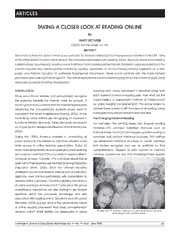
ERIC EJ1069138: Taking a Closer Look at Reading Online

TS 129 199-5 - V6.4.0 - Universal Mobile Telecommunications System (UMTS); Open Service Access (OSA); Parlay X web services; Part 5: Multimedia messaging (3GPP TS 29.199-05 version 6.4.0 Release 6)

Henry is Twenty by Samuel Merwin

Brief Couples Therapy Homework Planner (PracticePlanners)

The Winds of Chance by Rex Beach

süleyman gündüz

State of the Judiciary Address 2006
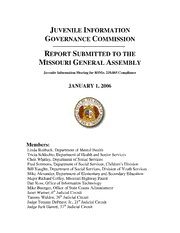
Juvenile Information Governance Commission Report Submitted to the Missouri General Assembly 2005
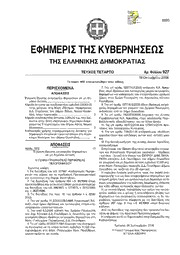
Greek Government Gazette: Part 4, 2006 no. 927

Steve Jobs

Cancun & Cozumel Alive! (Hunter Travel Guides)

The Boy Who Would Live Forever
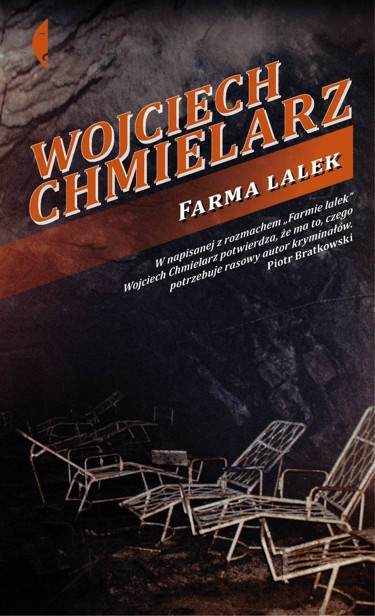
Farma lalek

